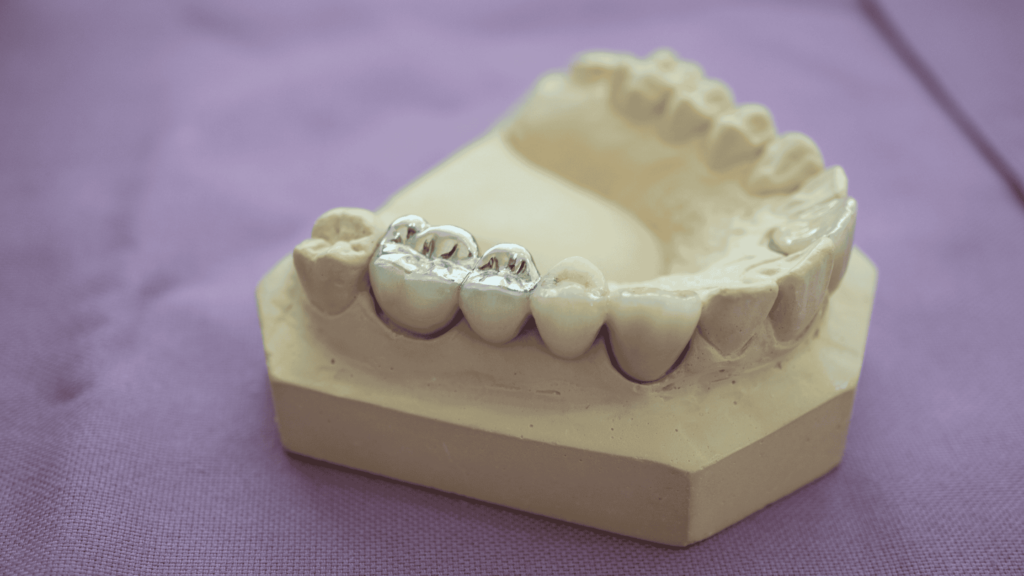
Should You Be Worried about Mercury Toxicity?
Mercury toxicity might sound like a scary term, but it’s something to be aware of, especially since mercury can build up from the food we eat. One of the biggest culprits? Seafood. The more polluted the waters, the more mercury can end up in fish—and we ingest it when we chow down on them. But it’s not just seafood! In this blog, we will take a closer look at the sources of mercury and how it can mess with your health. Plus, we’ll offer some practical tips for a safe and effective mercury detox to help you reduce your exposure and support your body’s natural ability to eliminate this toxic metal.
What Are Toxic Metals?
You’ve probably heard of heavy metals —arsenic, cadmium, lead, nickel, and mercury. These naturally occurring metals don’t break down, so they stick around in the environment for ages. Heavy metal toxins can easily enter the body through the skin, respiratory tract, and gastrointestinal tract and are linked with several health issues, including Immune System suppression, hormonal imbalances, and gut problems like leaky gut.
To learn more about heavy metals, check out our comprehensive blog, “What Is a Heavy Metal Detox? Understanding Its Role in Your Well-Being!“

Understanding Mercury Toxicity
What is Mercury?
Mercury is a naturally occurring metal, but different forms of it affect the body in different ways. Here are the three primary sources of mercury you should know about!
Elemental Mercury:
This liquid form of mercury is typically found in:
-
- Dental Fillings
- Older thermometers
- Fluorescent light bulbs
- Electrical devices (such as switches or batteries)
Methylmercury:
This type of mercury is typically found in ocean sediment that microorganisms transform into methylmercury. It accumulates in fish and seafood, especially larger fish, becoming a significant source of mercury toxicity when consumed. It’s commonly found in:
- Tuna
- Swordfish
- Shark
- King mackerel
- Tilefish
- Other large predatory fish that feed on smaller, mercury-contaminated fish
Inorganic Mercury:
This one comes from industrial activities and ends up in the environment and enters the food chain. It’s found in:
- Air pollution from coal combustion and waste incineration.
- Water systems where it settles into water and soil, contaminating aquatic life.
- Household products like batteries and light bulbs that leak mercury if broken or disposed of improperly.
- Vaccines – though most no longer contain thimerosal, some multi-dose flu vaccines still do for the prevention of bacteria.
How Does Mercury Get Into the Body?
Mercury toxicity begins with exposure, and there are multiple ways it can enter your body:
- Inhalation: Breathing in mercury vapor from industrial emissions, broken thermometers, or dental amalgams can send mercury straight into your lungs, where it is absorbed into your bloodstream.
- Ingestion: Eating contaminated fish is one of the most common ways mercury enters the body, especially from larger fish like tuna or swordfish. Contaminated water can also be a problem.
- Skin Contact: Breaking things like thermometers or light bulbs can release mercury, which can get absorbed through the skin.
How Does Mercury Affect Our Health?
Nervous System
Mercury is tough on the brain and Nervous System. It can cross the blood-brain barrier and lead to issues like headaches, brain fog, mood swings, memory loss, and even tremors. Chronic exposure is linked to neurological disorders like Alzheimer’s and Parkinson’s.
Immune System
Mercury disrupts Immune System function by causing chronic inflammation and suppressing immune responses. This makes it harder for the body to fight infections and recover from illnesses.
Endocrine System
Mercury disrupts hormone production and regulation, especially in the thyroid. The thyroid absorbs iodine, which is essential for producing thyroid hormones. However, because mercury is structurally similar to iodine, the thyroid may absorb mercury instead. This may lead to thyroid dysfunction, including hypothyroidism, hyperthyroidism, and autoimmune thyroid conditions like Hashimoto’s, which can lead to fatigue, weight fluctuations, and menstrual irregularities.
Digestive System
Mercury can affect gut health by disrupting the microbiome and contributing to things like a leaky gut. This impacts digestion and hinders the body’s ability to eliminate toxins effectively.
Locomotor System
Mercury toxicity can significantly affect our muscles and body, leading to neuromuscular changes like muscle weakness, atrophy, and twitching. It can also cause disturbances in sensation, such as “pins and needles” feelings in the hands, feet, and around the mouth. Coordination issues may also arise.
With such a wide range of impacts, addressing mercury toxicity is essential to protect overall health. Supporting your body with a thoughtful mercury detox can help reduce its harmful effects and restore balance across these systems.

Why Do Toxic Metals Have a Hard Time Leaving the Body?
Here’s the thing—mercury tends to build up in the body because it’s absorbed faster than it can be eliminated. This means it can bioaccumulate in tissues over time, especially in the brain and kidneys. Mercury sticks around, making it harder for your body to get rid of it.
Even though your liver and kidneys work hard to filter out toxins, mercury’s tricky chemistry makes it tough to break down. Chronic exposure leads to a gradual build-up, which means your detox organs can get overwhelmed. It also overwhelms the brain and kidneys, where mercury binds tightly to proteins. This bond makes it harder for the body to eliminate mercury, significantly slowing the detox process. And without the right support, mercury can hang around in your system for months or even years.
Additionally, several factors can hinder detoxification. When the liver is burdened with heavy metals, its ability to filter out other toxins is compromised. Nutrient deficiencies, especially in antioxidants and vitamins, can further slow detox pathways. A compromised gut can prevent efficient toxin elimination, allowing mercury to recirculate in the body. As a result, mercury detox requires more than just a functioning detox system—it needs the right support to help the body process and eliminate mercury effectively.
Practical Detox Tips for Mercury Toxicity
Detoxing mercury can take time, but there are simple, holistic steps you can take to support your body’s natural detox systems. Here are 8 tips to get you started:
1. Increase Antioxidant-Rich Foods
Eat more antioxidant-rich foods that contain nutrients like vitamin C (citrus fruits), selenium (such as Brazil nuts), and glutathione (found in leafy greens) to support your body’s ability to combat oxidative stress.
2. Support Your Liver!
Your liver is your body’s detox powerhouse, so giving it some extra love is important. Incorporate liver-supportive foods like beets, garlic, and dandelion root into your diet. Additionally, consider herbs like milk thistle and turmeric, known for their liver-cleansing properties.
3. Sweat It Out
Sweating is one of the body’s natural ways of releasing toxins, and regular exercise or sauna sessions can help speed up this process. Infrared saunas are particularly effective at drawing out heavy metals, including mercury, through the skin.
4. Support the Kidneys with Hydration
Drinking plenty of water is essential for flushing your body. You can take it up a notch by adding lemon and cucumber to your water for added detox support. Herbal teas, like nettle, ginger, or dandelion root, are also great for enhancing kidney function and detox.
5. Increase Fiber Intake
A fiber-rich diet (think fruits, vegetables, and whole grains) helps promote digestion and binds to toxins, aiding in their elimination through your bowel. Fiber supports your gut health, which is essential for an efficient detox process.
6. Supplements to Support Mercury Detox
When it comes to mercury detox, certain supplements can help enhance your body’s natural ability to eliminate toxins. For example, chlorella, a type of algae, is widely recognized for its detoxifying properties, as it binds to mercury and supports its removal.
Cilantro extract is another powerful supplement that may help to mobilize and eliminate heavy metals from the body. We also encourage it in whole food form in our foundation’s course, The Wellness Activator, which comes free with any scan purchase!
Alpha-lipoic acid is an antioxidant that supports liver function and helps detoxify mercury. It can be consumed through the diet through flax seeds, navy beans, avocado, chia, pumpkin seeds, and other plant oils. Taking it as a single fatty acid supplement or combined with EDTA to target heavy metals makes getting your daily amount easy when you can’t get these foods in your diet.
N-acetylcysteine (NAC) is a supplement that supports glutathione production, a key antioxidant best known for liver detox and for clearing mucus from the lungs. The benefits of NAC even extend to brain health, which can be threatened by mercury toxicity.
Garlic is a known superfood and medicinal plant in many cultures. Its benefits include anti-inflammatory and antimicrobial properties that can kill microbes in the gut. It influences the CYP450 enzymes involved in phase 1 of liver detox. Allicin is the main active compound in garlic, which has been shown to reduce blood lipid levels.
Research shows that probiotics can play a big role in heavy metal detox. In fact, they bind to and help eliminate toxins from the body, such as heavy metals and mycotoxins. Look for a multi-strain product with a high CFU (colony-forming unit) count.
7. Detox Baths and Epsom Salt Soaks
A warm Epsom salt bath is a relaxing way to help your body detox through the skin. Magnesium-rich Epsom salts support detox, relax the muscles, and help draw out toxins. This soothing practice may also help you sleep better and support your drainage pathways! For some easy recipes, look to our Detox Bath Guide.
8. Avoid Further Exposure
While you’re working to eliminate mercury from your system, it’s important to minimize further exposure. Be mindful of your sources of mercury, such as certain fish, dental fillings, and household products, and take steps to reduce these risks as much as possible.
What Are the Next Steps?
These tips can help your body manage mercury toxicity more effectively, promoting a smoother and faster mercury detox. However, since everybody is different, it’s always a good idea to consult a healthcare professional before starting any detox program.
If you want to take your detox to the next level, consider a Full Scan. Bioenergetic testing doesn’t diagnose mercury toxicity, but it can help identify hidden stress factors, including resonating heavy metals like mercury, hormone imbalances, and other factors that could be contributing to the toll of heavy metals on your body.
Ready to dive deeper into detox? Check out our FREE Drainage Guide to get started!


